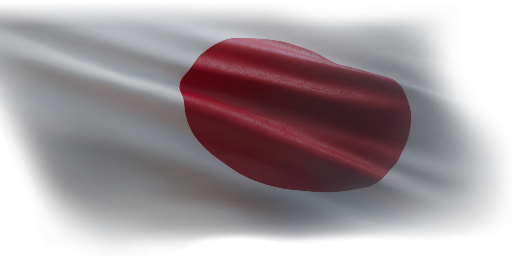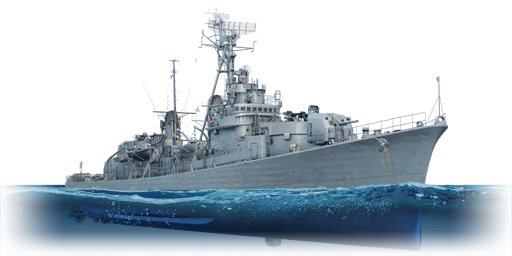



The JDS Harukaze (DD-101) (はるかぜ, namesake: Spring Wind) was the first destroyer class made in Japan after WW2, and resembles American destroyers more than its IJN predecessors. Inspired by ships from the war, the Harukaze-class mainly took advantage of designs from the American Gearing-class in overall construction and equipment, with traverse taken from Imperial Japanese designs.
The Harukaze was introduced in Update "Winged Lions". She is armed with 3 fast-firing single 127 mm guns with a variety of shells, including HE-VT to take down aircraft, which is also added to with a good AA battery of 2 quad-mount 40 mm Bofors cannons. However, Harukaze lacks torpedoes of any kind, which prevents it from reliably taking down large ships. Compared to other destroyers, Harukaze is relatively slow, having a maximum speed of only 56 km/h. In many ways, Harukaze is like a larger version of the JDS frigates Akebono and Ikazuchi, having fast-firing dual-purpose guns, a somewhat slow speed, and a secondary armament of only depth charges.
| Ammunition | Type | Armor penetration (mm) at a distance: | |||||
|---|---|---|---|---|---|---|---|
| 10 m | 100 m | 500 m | 1000 m | 1500 m | 2000 m | ||
| HE | 36 | 36 | 36 | 36 | 36 | 36 | |
| Common | 125 | 109 | 90 | 79 | 71 | 62 | |
| SP Common | 152 | 132 | 110 | 96 | 86 | 75 | |
| HE-VT | 36 | 36 | 36 | 36 | 36 | 36 | |
| Belt | Belt filling | Armor penetration (mm) at a distance: | |||||
|---|---|---|---|---|---|---|---|
| 10 m | 100 m | 500 m | 1000 m | 1500 m | 2000 m | ||
| AP-T/HEFI-T | 81 | 78 | 69 | 61 | 55 | 50 | |
| AP-T/AP-T/AP-T/HEFI-T | 81 | 78 | 69 | 61 | 55 | 50 | |
| HEFI-T/HEFI-T/HEFI-T/AP-T | 81 | 78 | 69 | 61 | 55 | 50 | |
8 × Mk.6 mortar depth charge











Seakeeping |
|---|
Unsinkability | |
|---|---|
Firepower | |||
|---|---|---|---|